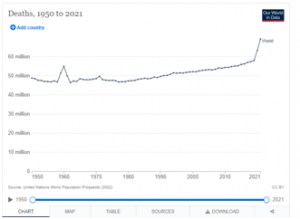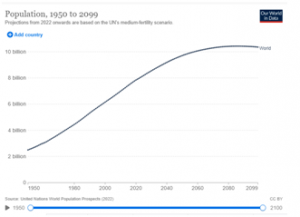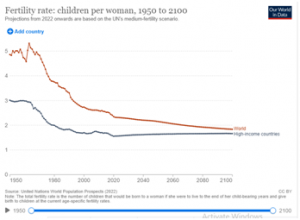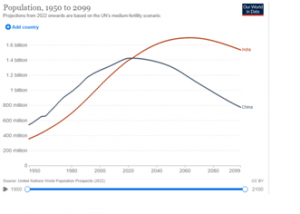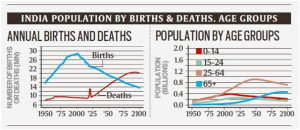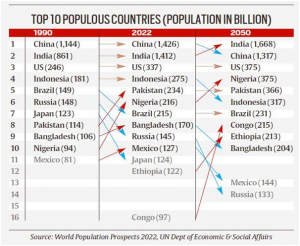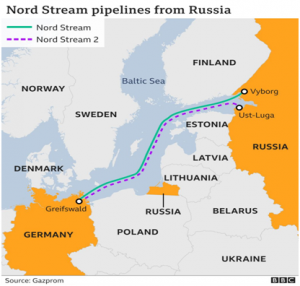THE SOCIAL ISSUES AND SOCIAL JUSTICE
1.UN POPULATION REPORT 2022: A LOOK AT THE TRENDS, PROJECTIONS AND IMPLICATIONS
THE CONTEXT: According to the 2022 edition of the United Nations’ World Population Prospects (WPP), India is projected to surpass China as the world’s most populous country in 2023. It also projected the world’s population to reach 8 billion on November 15, 2022.
THE EXPLANATION:
What is the World Population Prospects?
- The Population Division of the UN has been publishing the WPP in a biennial cycle since 1951. Each revision of the WPP provides a historical time series of population indicators starting in 1950. It does so by taking into account newly released national data to revise estimates of past trends in fertility, mortality or international migration.
KEY FINDINGS OF THE REPORT
The world population will pass 8 billion at the end of 2022
- Since 1975 the world has been adding another billion people every 12 years.
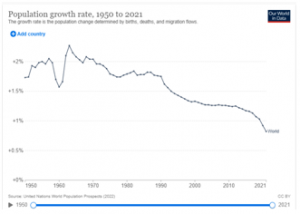
- It passed its last milestone – 7 billion in 2011. And, by the end of 2022, it will pass another one: there will be 8 billion people in the world.
- While this rate of absolute growth is similar to previous decades, the growth rate continues to fall. Since 2019, the global population growth rate has fallen below 1%.
- That’s less than half its peak rate of growth – of 2.3% – in the 1960s.
- As global fertility rates continue to fall (see below), this rate will continue to fall.
The UN estimates around 15 million excess deaths in 2020 and 2021 from the COVID-19 pandemic
- The Coronavirus (COVID-19) pandemic has had a significant impact on global population and migration trends.
- We know that the confirmed death toll from COVID-19 is likely to significantly underestimate the true number of deaths because of limited testing. One way to get a better estimate of the total mortality impact of the pandemic is to look at excess mortality data. We can look at the total number of deaths and compare this to the number we expect to occur in a non-pandemic year.
- In its latest population dataset, the UN estimates that in 2020, there were approximately 5 million excess deaths. In 2021, this figure was 10 million.

- This estimate of 15 million excess deaths over 2020 and 2021 is in line with estimates from other organizations. The Economist put its central estimate of excess deaths at 17.6 million. The World Health Organization, which is a UN organization, estimated 14.9 million excess deaths.
- These death figures are highly uncertain. But what’s clear is that the number of confirmed deaths – which was just 5.4 million by the end of 2021 – captures just a fraction of the true impact of the pandemic.
The global population is projected to peak at around 10.4 billion in 2086
The world population has increased rapidly over the last century. When will it come to an end?
- Previous versions of the UN World Population Prospects showed a significant slowdown in population growth, with very slow growth – almost reaching a plateau – by the end of the century. In its previous release, it projected that the world population would be around 10.88 billion in 2100 and would not yet have peaked.

- In this new release, the UN projects that the global population will peak before the end of the century – in 2086 at just over 10.4 billion people.1
- There are several reasons for this earlier, and lower, peak. One is that the UN expects fertility rates to fall more quickly in low-income countries compared to previous revisions. It also expects less of a ‘rebound’ in fertility rates across high-income countries in the second half of the century.
The global fertility rate has continued to decline to 2.3 births per woman
- A key determinant of the global population rate is the average number of children that women have over their lifetime – the ‘fertility rate’.

- Fertility rates have fallen rapidly across the world in recent decades. In 1950, the average woman gave birth around 5 times. Since then, fertility rates have more than halved. In 2021, this global figure was 2.3 births per woman.
- If you switch to the map tab in the interactive chart you see that most people in the world now live in countries where fertility rates are at – or below – the ‘replacement level’. This is the level at which populations would stabilize or shrink over the long-term. The UN reports that two-thirds of people live in countries where the fertility rate is below 2.1 births per woman. In some high-income countries such as South Korea, Japan, Spain, or Italy, it is as low as 1.3 births per woman.
Next year India is expected to take over from China as the world’s most populous country
- China has been the world’s most populous country for decades. It is now home to more than 1.4 billion people. However, its population growth rate has fallen significantly following a rapid drop in its fertility rate over the 1970s and 80s.

- The fertility rate in India has also fallen substantially in recent decades – from 5.7 births per woman in 1950 to just 2 births per woman today. However, the rate of this decline has been slower.
- Because of this, India will very soon overtake China as the most populous country in the world. The UN expects this to happen in 2023.
THE INTERNATIONAL RELATIONS
2.WHAT IS THE NORD STREAM 1 GAS LINK, WHY ITS SHUTDOWN HAS EUROPE ON EDGE
THE CONTEXT:The Nord Stream 1, Germany’s main source of gas from Russia, was shut down on July 11,2022 for 10 days of scheduled maintenance work.
THE EXPLANATION:
- There are growing concerns in European countries that Russia would extend the temporary suspension of gas supplies in retaliation against the current sanctions levelled against Moscow.
- While there have been attempts to reduce the dependence on Russian gas, Germany, which is Europe’s biggest economy, continues to heavily rely on it. The Nord Stream 2 pipeline, which was completed in September 2021 and would double the flow of direct Russian gas to Germany, was suspended in February, (2022) in response to the invasion of Ukraine.
- The Nord Stream 1, however, continued to be used, whose flow of gas was slashed by 60% in mid-June by Moscow. Russia had blamed the reduction of supplies on the delayed return of a turbine, which was being serviced by Germany’s Siemens Energy in Canada.
What is Nord Stream 1?
- Nord Stream 1 is a 1,224 km underwater gas pipeline that runs from Vyborg in northwest Russia to Lubmin in northeastern Germany via the Baltic Sea. Majority owned by the Russian energy giant Gazprom, the pipeline is the primary route through which its gas enters Germany, as reported by Reuters.

- It transports 55 billion cubic metres of gas a year, of which most goes directly to Germany, while the rest travels west and southwards through onshore links to other countries and into storage caverns.
Germany is Russia’s biggest European gas consumer, and most of it comes through the Nord Stream Pipeline. Its share of Russian gas supplies was 55% in 2021, and currently lies at 35%.
What are Europe’s alternative sources of energy?
There have been growing concerns that there could be further restrictions to European gas supplies, well beyond the scheduled maintenance that has been imposed. European countries rely on Russian energy for their cold winters, but now believe that Russia could weaponize their dependency as a response to their sanction due to the conflict in Ukraine. If Nord Stream 1 does not resume its supply to Europe, it will not have adequate gas supply by the end of the year.
How has Canada stepped in to help Germany?
- To assist Berlin’s energy crisis, the Canadian government announced it would circumvent its own sanctions and return a repaired Russian gas turbine to Germany that is required for the Nord Stream 1 gas pipeline.
- While the Canadian government announced that it would introduce fresh sanctions on Russia’s industrial manufacturing sector, that it was introducing a “time-limited and revocable permit” to allow the return of the key component.
3.EXPLAINED: INTERPOL’S ICSE INITIATIVE ON CHILD SEX ABUSE, NOW JOINED BY THE CBI
THE CONTEXT:India’s Central Bureau of Investigation has joined the Interpol’s International Child Sexual Exploitation (ICSE) initiative that will allow it to collaborate with investigators in other countries for detecting child sex abuse online and identifying abusers, victims, and crime scenes from audio-visual clips using specialised software.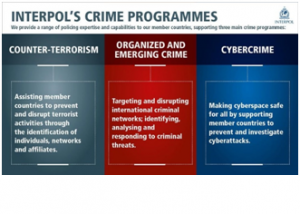
THE EXPLANATION:
- India is the 68th country to have access to this database and software. According to Interpol on average, the database helps identify seven child victims everyday globally.
What is Interpol?
- Interpol is the world’s largest international police organisation with 195 member countries, and is headquartered in Lyon, France. Each member country hosts an Interpol National Central Bureau that connects their national law enforcement to it and in India, the CBI is that nodal agency.
- Formed in 1923 as the International Criminal Police Commission, and started calling itself Interpol in 1956.
- India joined the organisation in 1949, and is one of its oldest members.
What is the ICSE database that the CBI has joined?
The ICSE database uses video and image comparison to analyse Child Sex Exploitation Material (CSEM) and make connections between victims, abusers and places. As of July 2022, over 30,000 victims of child abuse and over 13,000 criminals have been identified by the Interpol using this database and software.
- “The database avoids duplication of effort and saves precious time by letting investigators know whether a series of images has already been discovered or identified in another country, or whether it has similar features to other images,” said the Interpol.
- Using the image and video comparison software, the investigators attempt to identify locations of markers visible in a piece of media. This can be through the signage nearby, the kind of artwork, photos on a wall, etc. The detectives in all 68 countries of the grouping can further exchange information across the world.
- “By analysing the digital, visual and audio content of photographs and videos, victim identification experts can retrieve clues, identify any overlap in cases and combine their efforts to locate victims of child sexual abuse,” the Interpol website said.
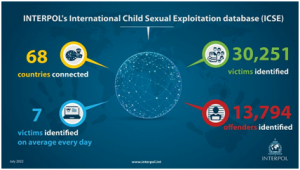
What has India done to combat online child sex abuse?
- India reported over 24 lakh instances of online child sexual abuse from 2017 to 2020, with 80% victims being girls below the age of 14 years, according to Interpol data. More than 60% unidentified victims were prepubescent, including infants and toddlers. Around 65% of unidentified victims were girls, but severe abuse images were more likely to have boys, the Interpol said on its website.
- In 2019, the CBI set up a special unit called the ‘Online Child Sexual Abuse and Exploitation Prevention/Investigation (OCSAE)’, for tracking and monitoring posting, circulation and downloads of CSEM online.
- In 2019, the National Centre for Missing and Exploited Children, a US-based non-profit organisation, had started sharing tip-offs about child sex abuse with Indian agencies. Received by the National Crime Records Bureau, this information was passed on to the states where the incidents took place, to boost detection of those sharing such content.
ADD TO YOUR KNOWLEDGE
INTERPOL Notices are international requests for cooperation or alerts allowing police in member countries to share critical crime-related information.
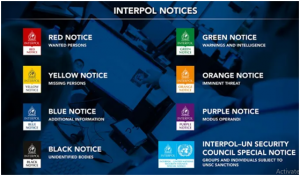
THE ENVIRONMENT, ECOLOGY AND CLIMATE CHANGE
4.EXPLAINED: CAN GREEN TECHNOLOGY HURT MARINE BIODIVERSITY?
THE CONTEXT:Recently, a new study has flagged emerging threats that could have a major impact on marine biodiversity over the next 5-10 years.
THE EXPLANATION:
The study, published in the journal Nature Ecology and Evolution, speaks about the negative impacts of green technology adoption that must not be ignored. A technique called ‘horizon scanning’ was used by a team of 30 multidisciplinary experts to arrive at their conclusions.
Green technology impact
- With increased public pressure against marine plastic pollution, there has been an attempt to replace fossil fuel-based plastic with biodegradable polymers, such the ‘biodegradable plastic bags’ made of plant starches. However, the researchers claim that these materials do not biodegrade under natural conditions in the ocean and their widespread adoption can cause marine litter as well. Since their long term impact on the environment remains unknown, they can lead to a fresh set of problems.
- The researchers argue that the growing demand for renewable energy technology, such as lithium batteries for electric cars, also pose a potential threat to marine ecology.
- Deep sea ‘brine pools’ of more saline water, contain higher concentrations of lithium and could become future sites for extraction. The study finds that these ecosystems support diverse species, many of which are largely undiscovered. A rising demand for lithium-powered electric vehicles could put these environments at risk.
Other challenges
- Overfishing has already been recognised as an immediate problem, with the WTO calling for the prohibition of subsidies towards those engaging in fishing of overfished stocks.
- The authors project a greater amount of fishing in deeper sea water, in order to address growing concerns of global food security.
- There are around 10 billion tonnes of small lanternfishes in the mesopelagic zone (a depth of 200m – 1,000m), which are not fit for human consumption but can be sold as food to fish farms, or be used as fertiliser.
- However, the large-scale harvesting of mesopelagic fish would cause immense environmental damage, because these species act as an ocean pump and remove carbon from the atmosphere.
Horizon scanning
- It is a technique which seeks to identify novel but poorly known issues that are likely to become important consequences over the next decade.
- The researchers of the study argue that this methodology is meant to “primarily act as signposts, putting focus on particular issues and providing support for researchers and practitioners to seek investment in these areas” before they have a major impact.
- It is also an effective way of assembling experts from diverse subject areas to examine common issues and formulate more comprehensive solutions.
- The horizon scan method has been previously used to identify issues that are now known to have universal environmental impact. A scan from 2009 gave an early warning about the danger that microplastics (tiny plastic debris smaller than 5 mm) pose to marine environments. Since then, countries such as the US and UK have banned cosmetics from containing microbeads.
|
VALUE ADDITION: What are plastic microbeads? Plastic microbeads are a category of microplastics, which are generally very, very small—and are sometimes even difficult to see. Microbeads also are often wrongly confused with plastic pellets, which are the basic form of plastic raw materials used in manufacturing, and are generally in the shape of a cylinder or disk, and around 2-3 millimeters in size. |
THE ECONOMIC DEVELOPMENT
5.WHAT IS THE SARFAESI ACT, INVOKED AGAINST TELECOM PROVIDER GTL?
THE CONTEXT:Banks have invoked the Securitisation and Reconstruction of Financial Assets and Enforcement of Security Interest (SARFAESI) Act against telecom infrastructure provider GTL to recover their pending dues.
THE EXPLANATION:
According to report, recovery action has been initiated by IDBI Bank on behalf of lenders, whose total exposure to GTL stood at Rs 7,250 crore as of December 31, 2021.
What is the SARFAESI Act?
- The SARFAESI Act of 2002 was brought in to guard financial institutions against loan defaulters.
- To recover their bad debts, the banks under this law can take control of securities pledged against the loan, manage or sell them to recover dues without court intervention.
- The law is applicable throughout the country and covers all assets, movable or immovable, promised as security to the lender.
Aim of the SARFAESI Act:
The SARFAESI Act has two main objectives:
- Recovering the financial institutions’ and banks’ non-performing assets (NPAs) in a timely and effective manner.
- Allows financial organisations and banks to sell residential and commercial assets at auction if a borrower defaults on his or her debt.

Why was such a law needed?
- Before the law was enacted in December 2002, banks and other financial institutions were forced to take a lengthy route to recover their bad debts. The lenders would appeal in civil courts or designated tribunals to get hold of ‘security interests’ to recovery of defaulting loans, which in turn made the recovery slow and added to the growing list of lender’s non-performing assets.
What powers do banks have under the law?
- The Act comes into play if a borrower defaults on his or her payments for more than six months. The lender then can send a notice to the borrower to clear the dues within 60 days. In case that doesn’t happen, the financial institution has the right to take possession of the secured assets and sell, transfer or manage them.
- The defaulter, meanwhile, has a recourse to move an appellate authority set up under the law within 30 days of receiving a notice from the lender. According to a 2020 Supreme Court judgment, co-operative banks can also invoke Sarfaesi Act. According to the Finance Ministry, the non-banking financial companies (NBFCs) can initiate recovery in Rs 20 lakh loan default cases.
THE GOVERNMENT INTERVENTION AND POLICIES
6.THE NEW GUIDELINES TO PREVENT UNFAIR TRADE PRACTICES
THE CONTEXT:Recently, the Central Consumer Protection Authority (CCPA) announced five guidelines to prevent unfair trade practices and to protect consumer interests regarding the levy of service charges in hotels and restaurants
THE EXPLANATION:
The guidelines are in addition to the Centre’s 2017 guidelines which prohibit the levy of service charges on consumers by hotels and restaurants, and terms the charging for anything other than “the prices displayed on the menu card along with the applicable taxes” without “express consent” of the customer as “unfair trade practices”.
What are the powers of the CCPA?
- The CCPA has been established to regulate matters related to the violation of the rights of consumers. Under the Consumer Protection Act (CPA), 2019, the authority was established to regulate violations of consumer rights, unfair trade practices, and false or misleading advertisements that are prejudicial to the interest of the public.
- The CCPA has authority under section 18 of the CPA, 2019 to protect, promote and most importantly enforce the rights of the consumers and prevent violation of their rights under the Act. It also seeks to ensure that no person engages in unfair trade practices. It is also empowered to issue guidelines to enforce the rights of the consumers laid down in the Act.
- The authority has issued a letter to the Chief Secretaries of the States on service charge imposition, asking them to ensure compliance with the new guidelines on service charges. It has also been said that the State should instruct all the district magistrates to take appropriate action against violations of the guideline.
What is a service charge?
|
What do the new guidelines specify?
- As per the new guidelines, hotels or restaurants are prohibited from levying extra charges automatically or by default in the bill or by any other name. Also, they are not allowed to force service charges, and must clearly inform the consumers that service charges are voluntary, optional, and at their discretion. Most importantly, hotels and restaurants are no longer allowed to restrict entry or services based on the collection of service charges. Furthermore, hotels cannot add service charges to their bills and charge GST on the total.
- The point here is that any tip, donation, token, gratuity, etc., is no longer permitted to be charged and shall be considered as a separate transaction between the consumer and the staff of the hotel and restaurant. It is entirely up to the consumer to decide whether or not to tip. If a consumer enters a restaurant or orders something, the restaurant policy cannot require them to tip. Therefore, consumers cannot be forced to pay a service charge without having the choice to decide whether they want to do so.
VALUE ADDITION:
Central Consumer Protection Authority (CCPA)
Composition:
- It will have a Chief Commissioner as head, and only two other commissioners as members — one of whom will deal with matters relating to goods while the other will look into cases relating to services.
- The CCPA will have an Investigation Wing that will be headed by a Director General.
- District Collectors too, will have the power to investigate complaints of violations of consumer rights, unfair trade practices, and false or misleading advertisements.
THE PRELIMS PRACTICE QUESTIONS
QUESTION OF THE DAY
Q. Consider the term “Horizon scanning” recently seen in the news:
a) It is the new thermal body scanning frame developed by IIT Kanpur.
b) It is a technique for negative impacts of green technology adoption.
c) It an automated facial recognition system, recently inaugurated in Indra Gandhi Airport, Delhi.
d) It a small telescope, developed by NASA for detecting the space debris.
ANSWER FOR 11TH JULY 2022
ANSWER: D
EXPLANATION:
Both statements are correct.
- CAATSA meant to punish countries having deep engagements with Russia, North Korea, and Iran using economic sanctions.
- India has purchased the S-400 Triumf missile systems, However, the application of CAATSA is not limited to the S-400.

